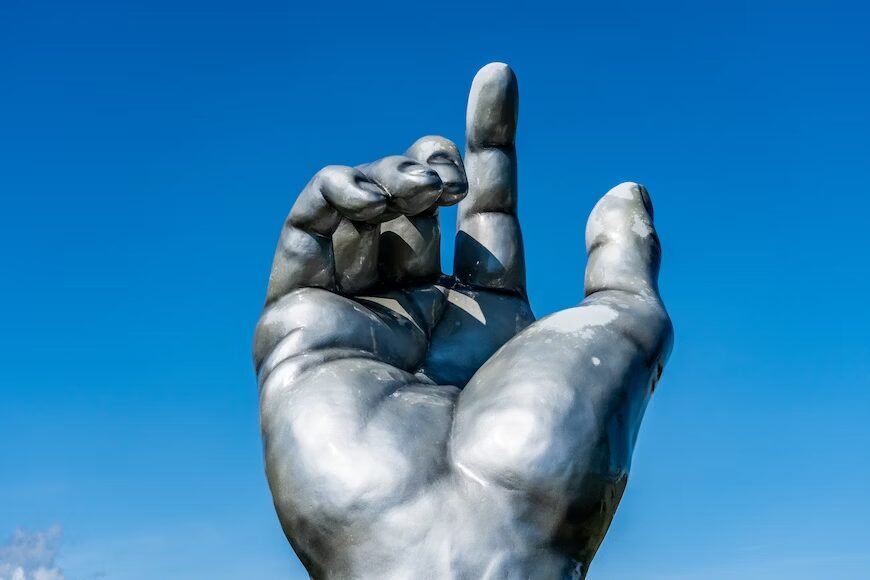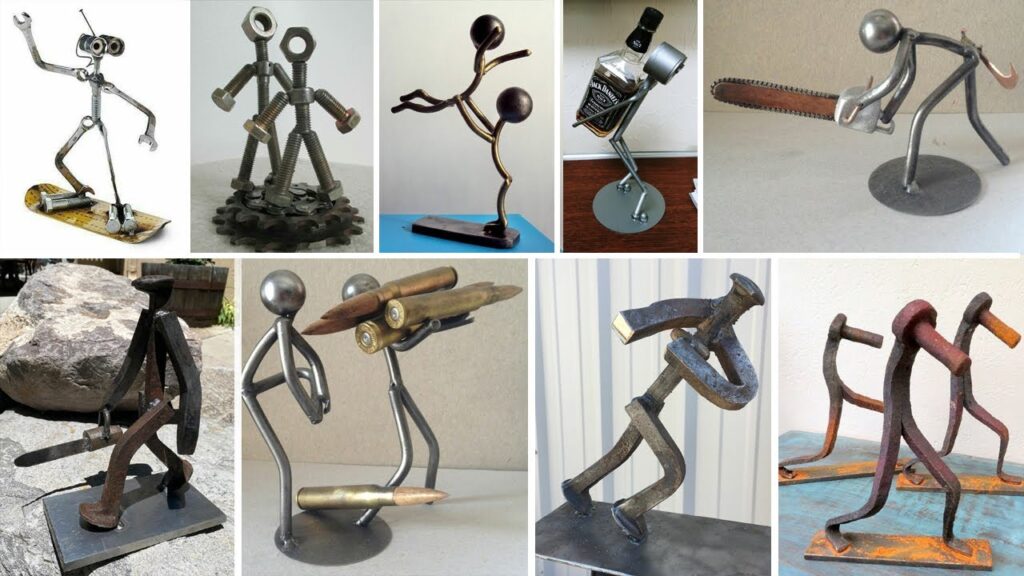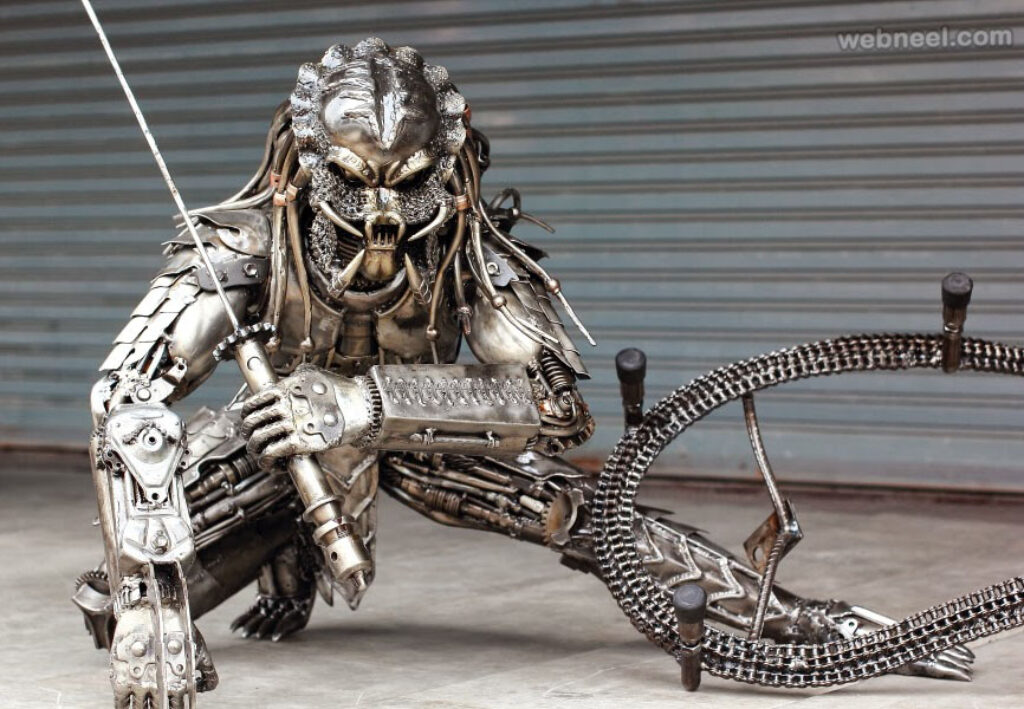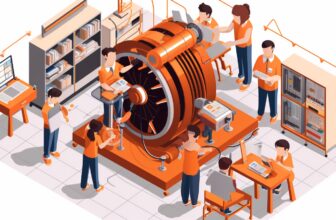
What could you do with a heap of scrap metal? Weigh it? Drop it off at a recycling center? How about wielding a welding torch and transforming it into a work of art?
That’s precisely what these seven talented artists chose to do. The results of their efforts, as you’re about to witness, are truly breathtaking.
Table of Contents
What Kinds of Metals Are Commonly Used for Metal Sculptures?

Source: youtube.com
Metal sculptures can be crafted from a wide array of metals. However, artists often utilize metals like bronze, which is an alloy of copper and tin. Therefore, it goes to show that sculptures can also be made out of gold, silver, copper, aluminum, lead, brass, and iron. Furthermore, as you’re about to explore, scrap metal is also a favored material for creating sculptures.
Throughout history, numerous renowned sculptures have captivated audiences worldwide. While you may already have a few in mind, here are some of the most notable examples:
- Pieta (1499) by Michelangelo
- David (1440s) by Donatello
- Christ the Redeemer (1931) by Paul Landowski
- The Great Sphinx of Giza
- The Thinker (1904) by Auguste Rodin
- Venus de Milo by Alexandros of Antioch
Obviously, this isn’t a complete list, but it offers a glimpse into the rich and beautiful culture of sculptures.
Basic Sculpture Types

Source: modernsculptureartists.com
The realm of sculpture encompasses two primary categories: relief sculpture and sculpture in the round.
Relief sculpture involves images that are set against a flat background. For instance, a coin is one of the most common examples of a relief sculpture as the date, inscription, and patterns are a bit raised above the surface. When the raised portion is minimal, it is known as low relief or bas relief. In contrast, ancient Egyptians employed sunken relief, where figures were carved into a flat surface. High relief refers to statues with a near three-dimensional quality while remaining connected to the background.
On the other hand, sculpture in the round is freestanding, not reliant on any background. Most statues and portrait busts fall into this category.
Both relief sculpture and sculpture in the round can be further divided into three methods of sculpting:
- Modeling – This technique involves working with soft, pliable materials like bronze and copper. The sculptor adds and molds pieces of material to achieve the desired shape.
- Carving – In contrast to modeling, carving entails the removal of material. Using a chisel or knife, the artist carves a part of the metal used until the desired form or shape is achieved.
- Joining – This method is prominent in the 20th century. It involves assembling pieces of wood, metal, or plastic to create a construction. Modern abstract forms often lend themselves to this joining technique, resulting in airy and unconventional sculptures.
How to Create Stunning Metal Sculpture Creations

Source: webneel.com
Mastering the art of sculpture requires a solid grasp of fundamental techniques. Working with metal, in particular, demands specialized tools and a comprehensive understanding of its properties when formed. The more you know about the basics, the easier it is to learn this craft.
Below are some tips and tricks when making stunning metal sculpture creations as a beginner.
Step 1: Establish a Suitable Workspace
As an aspiring sculptor, your initial task is to secure a well-suited workspace. This doesn’t require an excessive amount of room, but rather enough space to move around comfortably and set up a work table while also accommodating your tools.
The workspace can be situated inside your home, in the garage, or in any other appropriate area. The crucial aspects to consider are cleanliness, good lighting, and a comfortable chair.
Step 2: Embrace Tool Exploration
One of the most beautiful parts of sculpting is the freedom it gives the artist to experiment with various tools. Every material you use, no matter how small, is capable of producing a wide range of effects. Explore the diverse array of knives, brushes, wires, and specialized tools designed for creating textures.
As your sculpting skills progress, you’ll discover how different tools can contribute to subtle touches in the metal, thereby breathing life into your sculptures.
Step 3: Create a Design Sketch
Before diving into the metal, take a moment to sit down and sketch your concept on a piece of paper. Refrain from fretting about the quality of your sketch; it serves as a roadmap or reference tool for your sculpture.
Consider sketching your design from different angles and scaling. Initially, this step may appear unnecessary, but you’ll be pleasantly surprised by how valuable it proves to be throughout the process.
Step 4: Construct an Armature
An armature acts as the supportive structure around which you build your sculpture. It plays a vital role in preventing the metal from collapsing or losing its form as you work.
In smaller sculptures, wire is a popular choice for creating the armature due to its malleability. For larger works, materials like PVC may be more suitable. The key is to select a material that offers stability during the sculpting process and provides support once the sculpture is completed.
Step 5: Carving and Making Sections and Texture
Sculpting entails the process of removing raw material to reveal the hidden shape within. As your skills progress and your familiarity with tools grows, you’ll be astonished by what you can achieve with a few subtle touches.
The art of shaping and texturing can only be acquired through experience. While some individuals may have a natural inclination for it, practice is key to honing your skills.
Patience and a focus on mastering the fundamentals are essential. As you shape the metal, add texture, and explore techniques like scooping and intricate detailing, you can also introduce additional sections and expand upon your initial concept.
Resist the temptation to harbor unrealistic expectations from the start. Sculpting is a learned skill that requires time and repetition to master each step of the process.







